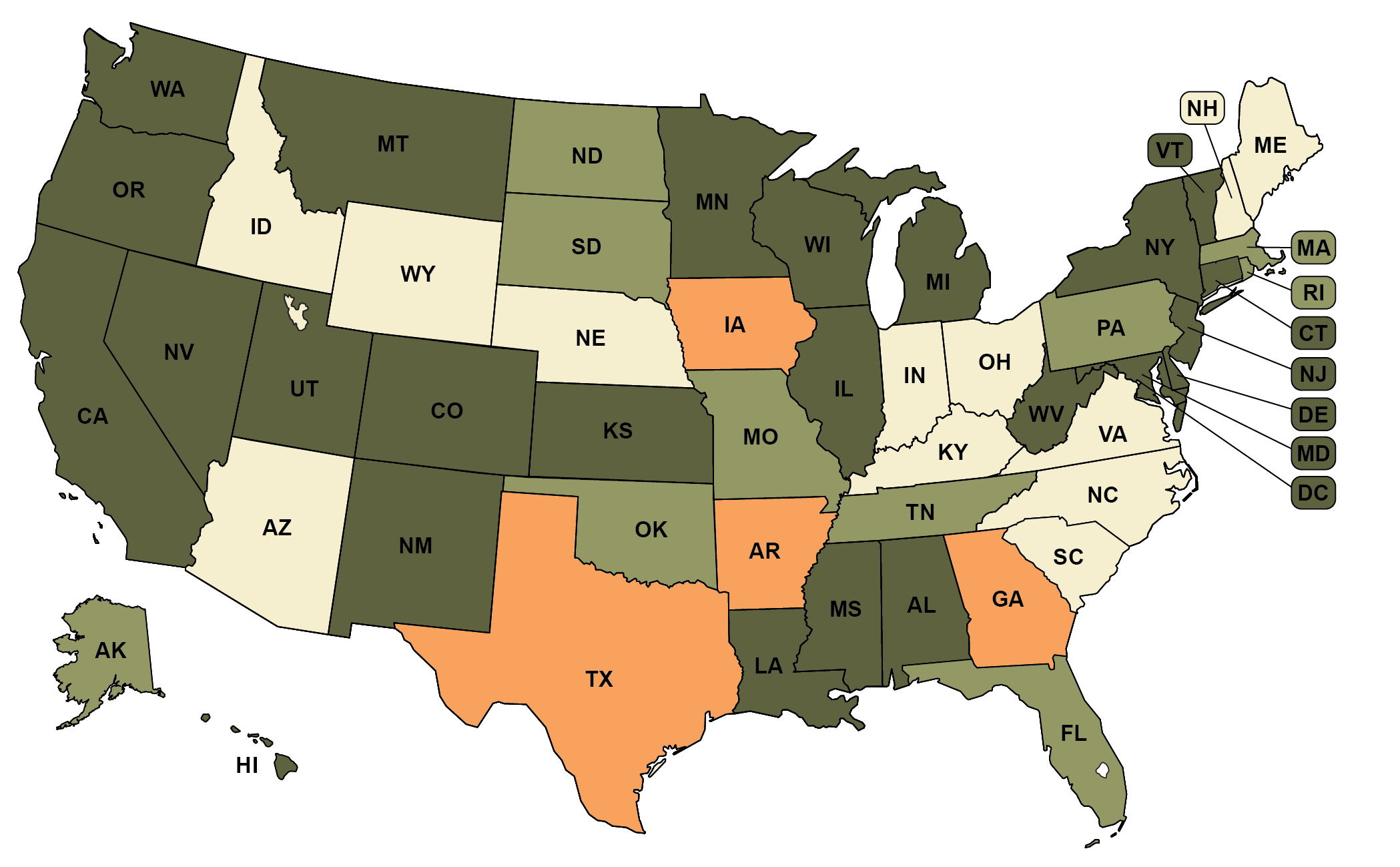In addition to policies governing which voters qualify for absentee ballots, some states have implemented options for voters to sign up to be placed on a list to permanently receive absentee ballots each election. States differ on whether all voters or only certain voters are eligible for this option, and other states allow annual or bi-annual sign ups. In addition, certain states will send applications rather than actual ballots. Following the 2020 election, a small number of Republican states have implemented bans on the unsolicited distribution of absentee ballots or applications.
-
State allows some or all voters to sign up for a permanent absentee list to receive ballots
(23 states + D.C.)
-
State allows some or all voters to sign up for annual or bi-annual absentee list to receive ballots OR permanent list to receive applications
(10 states)
-
State has no applicable law
(12 states)
-
State bans unsolicited distribution of absentee ballots or applications
(5 states)
Recommended citation: Movement Advancement Project. "Permanent Absentee Voter List Availability" https://www.mapresearch.org/democracy-maps/permanent_absentee_lists. Accessed [day of access]
Breakdown by Population
*Note: These percentages reflect the voting-eligible population, as reported by the United States Election Project.
46 % of voting-eligible population lives in states that allow some or all voters to sign up for a permanent absentee list to receive ballots
19 % of voting-eligible population lives in states that allow some or all voters to sign up for annual or bi-annual absentee list to receive ballots OR permanent list to receive applications
21 % of voting-eligible population lives in states that have no applicable law
14 % of voting-eligible population lives in states that ban unsolicited distribution of absentee ballots or applications


